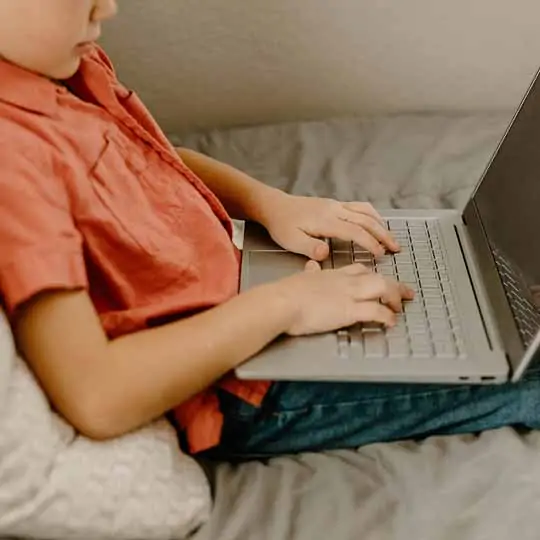

Parent Alert: Kids Can Make AI Porn—4 Big Dangers You Need to Know
What happens when kids use AI not to just watch pornography, but to make it?
What!? You might have just exclaimed through your whiplash. Kids can generate porn with AI?
You better believe it.
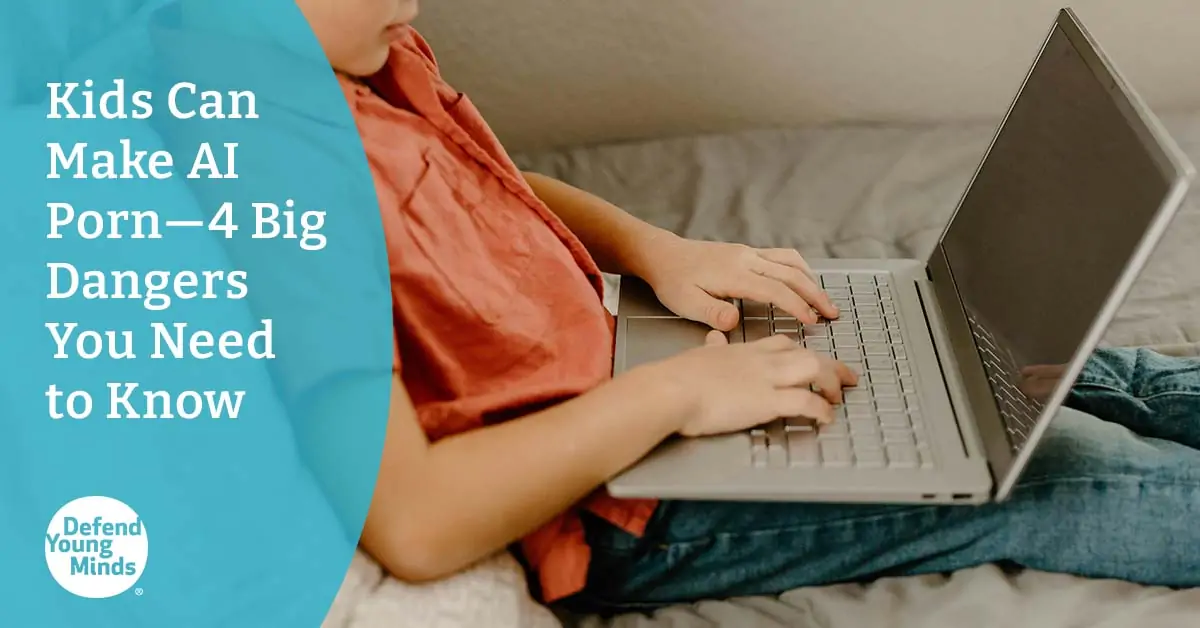
How hard is it for kids to create AI porn?
Short answer? Not very. And that’s what makes it scary.
Comedian Theo Von asked Open AI’s CEO Sam Altman, “Can AI pull up pornography?” Altman’s response? A quick, “Sure,” leaving Von stunned. You can almost hear every parent collectively groan. (Find that moment at timestamp 2:05 in This Past Weekend episode #599.)
Sam Altman | This Past Weekend w/ Theo Von #599
That one word—“sure”—sums it up. Generative AI has made it disturbingly easy for anyone, even kids, to create sexually explicit images or videos. A plethora of tools exist to generate porn. Some include Veo3 and ChatGPT’s image and video extension.
And what curious kid wouldn’t be tempted to turn to AI for pictures or videos of naked people, or sex? It’s normal for kids to be curious about bodies. Most of us were too. The difference is that when we were curious, we might have flipped through a health book or typed something awkward into a search bar. Today, curious kids can simply ask AI to make it.Just imagine what could happen when natural childhood curiosity meets the ease of generative AI.
Related: AI Safety for Kids: 6 Best Practices Every Parent Should Know
Why creating AI porn is so dangerous for kids
- The brain is rewired with a double whammy. When a child creates pornography, they aren’t just consuming it. They’re crafting it. We already know that viewing pornography activates the brain’s reward centers. And we also know from brain research that when we’re the ones creating—whether it’s art, music, or storytelling—the brain lights up even more than when we’re passively consuming content. Put those together, and well, you can see the problem. Creating pornography is likely more neurologically reinforcing than simply watching it. The imagination and sense of control used during creative processes draws kids in more deeply. That emotional investment can increase the risk of addiction and even fuel fetishization. It’s like giving the brain a double hit of dopamine.
- Sexual scripts are poisoned. Pornography already warps sex, creating unhealthy sexual scripts in kids. But AI porn? It hyper-personalizes those scripts. When kids design every detail themselves, it trains the brain to see sex as performative rather than relational. Sex then becomes a set of customizable performances rather than an intimate bond. AI porn isn’t just pixels. It’s practice for objectification.
- Real people can be targeted. Nudifying apps are used to create deepfake pornography. Users upload real photos (sometimes of classmates, friends, or influencers) and let AI do the rest. Whether or not those images are ever shared, the damage is real. It corrodes empathy, dulls conscience, and deeply violates the person whose images were used.
- Legal nightmares abound. If a young person makes AI porn, chances are the subjects in their imagination are close to their own age. That’s child sexual abuse material (CSAM, also known as child pornography) in the eyes of the law. Forty-five U.S. states have laws against AI-generated child sexual abuse material even if no real child was involved. Creating or possessing it can result in felony charges.
It’s also a federal crime. The U.S. Department of Justice warns, “All forms of AI-created CSAM are illegal—and deeply harmful to victims and society.”
Criminal Law specialist Dimitry Gorin warns:
“It's a federal crime to possess, view, create, or distribute such material. If you're accused of doing any of these things, you could face significant time in federal prison if convicted, even if no actual minors were directly involved in the creation of the images.”
And Steven Grocki, who leads the Justice Department’s Child Exploitation and Obscenity Section, made it clear in an interview with the Associated Press:
“These laws exist. They will be used. We have the will. We have the resources. This is not going to be a low priority that we ignore because there’s not an actual child involved.”
Translation: this is not a gray area, and it’s not something prosecutors will overlook. This is not the time to think, “not my kid.”
Related: Top 5 Ways AI Impacts Cognitive and Emotional Intelligence in Kids
[[CTA]]
Can parents block access to generative AI?
The unfortunate reality is, you can’t completely prevent access to generative AI. These models are deeply embedded into chatbots, writing apps, and even productivity tools. And manually blocking every AI site isn’t realistic because there are thousands, with new ones popping up daily!
That’s why the most effective strategy isn’t blocking, but intentional access. Here are a few tips.
- Keep screens where you can see them.
- Set up computers, laptops, and Chromebooks in open, visible areas like family rooms or kitchens. Bedrooms and bathrooms are off limits for device use.
- Use docking stations or external monitors to make laptops less private.
- Avoid “personal” devices for young kids. Let them share a family computer where activity is visible.
- Set firm limits on mobile device use.
Phones and tablets are portable, and private, which makes them risky for unfiltered AI access.
Practical steps:
- Delay personal devices as long as possible. Younger kids don’t need their own AI-capable phones or tablets.
- Disable web browsers on mobile devices. You can also use Canopy as an extra layer to filter nudity on browsers (in case disabling browsers fails), or Bark to block the entire AI category.
- Disable the app store so new apps can’t be downloaded without approval.
- Only allow apps you approve. Be sure to test these regularly, checking for “feature creep.”
- Check regularly for new apps or hidden browsers. Remember: if an app or website can take prompts, generate images, or use text-to-video, it can be misused.
- Talk early and often about pornography and AI.
No filter can replace a parent’s voice. Kids need to understand why you set limits. Not just what the limits are. You might say:
“AI can be used to create beautiful and helpful things. But it can also create inappropriate content that harms your heart and mind.”
Then expand the conversation. Discuss:
- Why curiosity about bodies and sex is normal, but creating or viewing pornography is harmful.
- How AI porn can distort ideas about relationships and respect.
- What to do if they stumble on something inappropriate (come tell you, don’t hide it).
Keep explanations simple for very young children. You might say, “Pornography means pictures or videos that show private parts where a bathing suit should cover.”
If your child uses drawing or AI art tools, remind them that we never make pictures like that, even pretend ones. If they ever see or accidentally create a picture of someone without clothes, they should look away, turn it off, and tell a trusted adult right away.
Use Good Pictures Bad Pictures to help with these conversations
If you’re wondering how to start these conversations, we can help. The Amazon bestselling Good Pictures Bad Pictures books by Kristen A. Jenson give parents and kids simple, age-appropriate language to warn about pornography.
Through gentle language, kids learn how the brain can get “tricked,” why porn is harmful, and what to do when they see it. This empowers them to reject it.
AI can’t generate wisdom
If the current AI landscape leaves you feeling discouraged, you’re in good company. Most parents feel like technology is evolving faster than they can read the instructions. And honestly? It is.
But here’s the thing: technology has always marched on. From radio to TV, from the internet to smartphones, there’s always been a “next big thing.” And right when we start to get a handle on it, something else rolls in and we have to figure it all out again.
What doesn’t change is what your kids need most. They’ll always need your guidance, your love, and your values to make sense of the world around them. Those are the real constants. And the real safeguards.
AI might be able to generate art, essays, and even pornography. But it will never generate wisdom. It can’t model empathy, or teach right from wrong. The only true firewall is you—the steady, loving parent who keeps showing up, talking, and teaching what matters most.
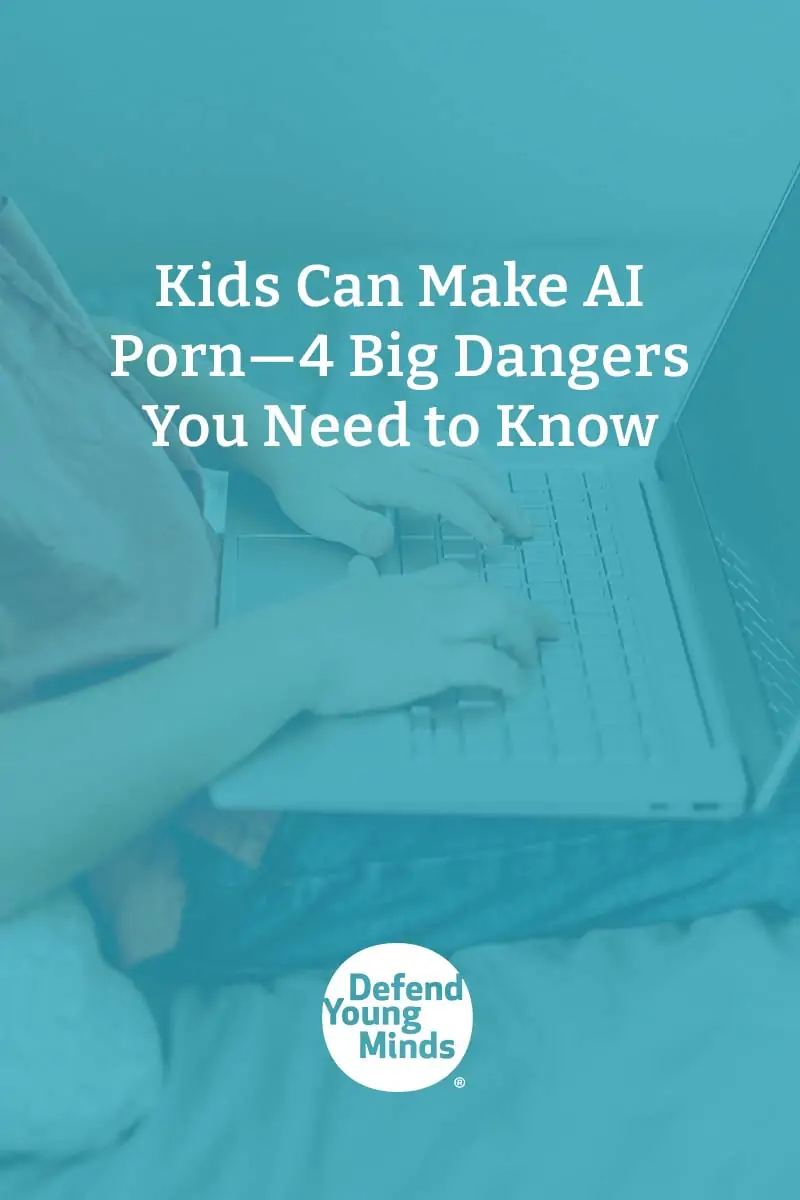
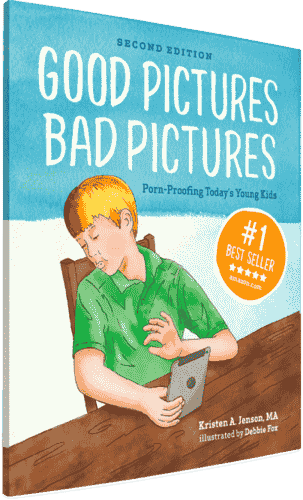
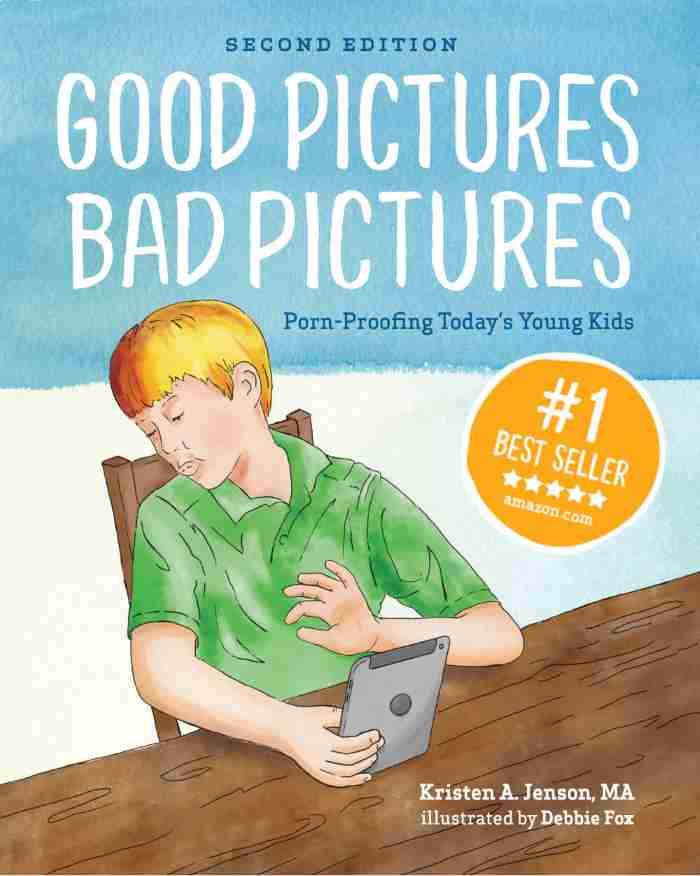
Good Pictures Bad Pictures
"I really like the no-shame approach the author takes. It's so much more than just 'don't watch or look at porn.' It gave my children a real understanding about the brain and its natural response to pornography, how it can affect you if you look at it, and how to be prepared when you do come across it (since, let's face it... it's gonna happen at some point)." -Amazon Review by D.O.







